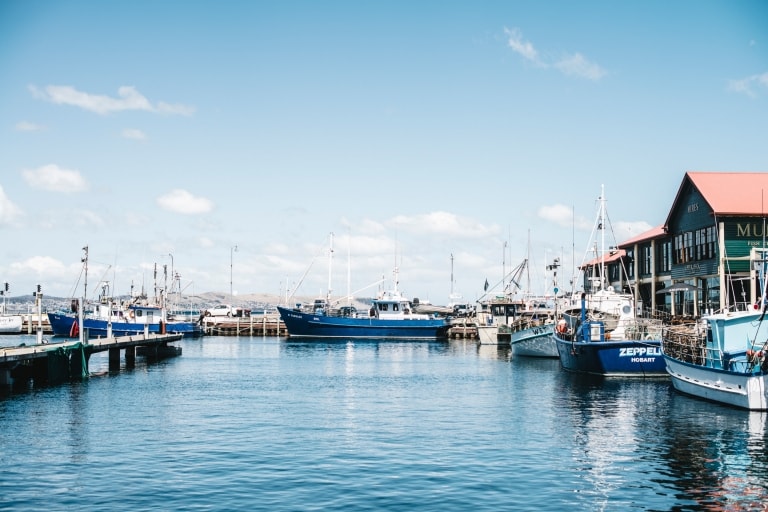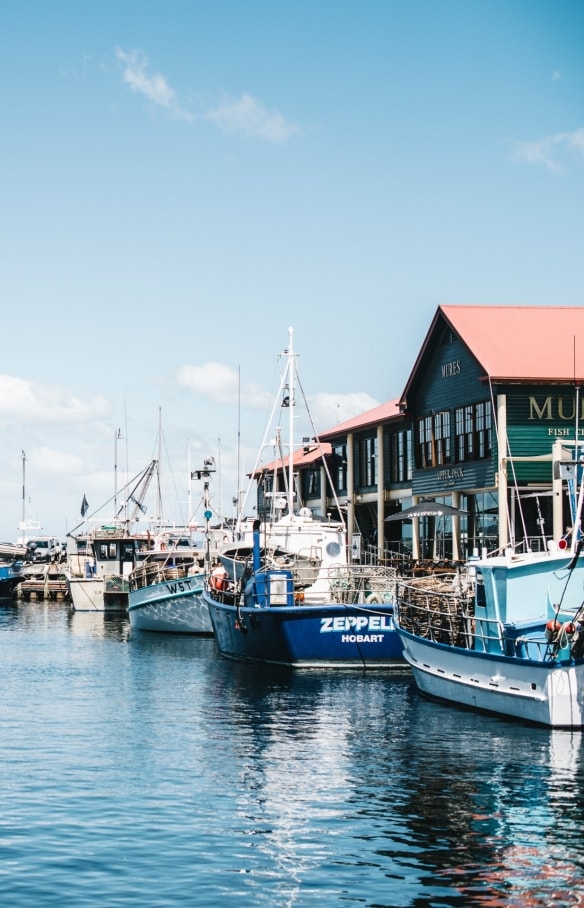Daylight saving begins at 2am, Eastern Standard Time, on the first Sunday in October and ends at 3am Eastern Daylight Saving Time on the first Sunday in April. During this time Hobart moves to Australian Eastern Daylight Time (AEDT), UTC +11.

Weather in Hobart
Find information on temperature, rainfall and seasonal activities to help plan your holiday in Hobart.
What can you expect from Hobart weather?
Hobart experiences four distinct seasons, each with its own beauty and charm. Plan ahead with this information on temperature and rainfall.
Summer (December – February)
Hobart is one of the best places to visit during summer, with average temperatures ranging from 11.5 - 21°C (52.7 - 69.8°F). The months of January and February are also the driest, and beaches are warm enough to swim.
Autumn (March – May)
Autumn has many calm, sunny days, with average temperatures between 8.9 - 17.3°C (48 - 63.1°F). The city is blanketed in deep red and yellow hues as the trees begin to change.
Winter (June – August)
During the winter, the island feels the southerly winds from the Antarctic and experiences some of Australia's coolest temperatures. Mount Wellington is dotted with snow and average daily temperatures range from 5 - 12.3°C (41 - 54.1°F). Overnight temperatures can drop as low as 3°C (37.4°F). Though it's cold, there are still plenty of epic things to do.
Spring (September - November)
During spring, average temperatures range from 7.8 - 16.9°C (46 - 62.4°F). This is the wettest time of year (168.7mm / 6.6 inches), however it should be noted that Hobart is Australia’s second-driest capital city (after Adelaide).
Frequently asked questions about the weather in Hobart
Seasonal weather in Hobart
SUMMER
| Weather Categories | Dec | Jan | Feb |
|---|---|---|---|
| 20.3 69 | 21.6 71 | 21.6 71 | |
| 10.8 51 | 11.9 53 | 12 54 | |
| 57 | 48 | 40 | |
| 13 | 11 | 9 |
AUTUMN
| Weather Categories | Mar | Apr | May |
|---|---|---|---|
| 20.1 68 | 17.3 63 | 12 54 | |
| 10.9 52 | 8.9 48 | 7 45 | |
| 45 | 52 | 46 | |
| 11 | 12 | 14 |
WINTER
| Weather Categories | Jun | Jul | Aug |
|---|---|---|---|
| 12 54 | 11.7 53 | 13 55 | |
| 5.2 41 | 4.6 40 | 5.2 41 | |
| 54 | 52 | 54 | |
| 15 | 15 | 16 |
SPRING
| Weather Categories | Sep | Oct | Nov |
|---|---|---|---|
| 15.1 59 | 16.9 62 | 18.7 66 | |
| 6.4 44 | 7.8 46 | 9.3 49 | |
| 54 | 62 | 54 | |
| 15 | 16 | 14 |

































































































































